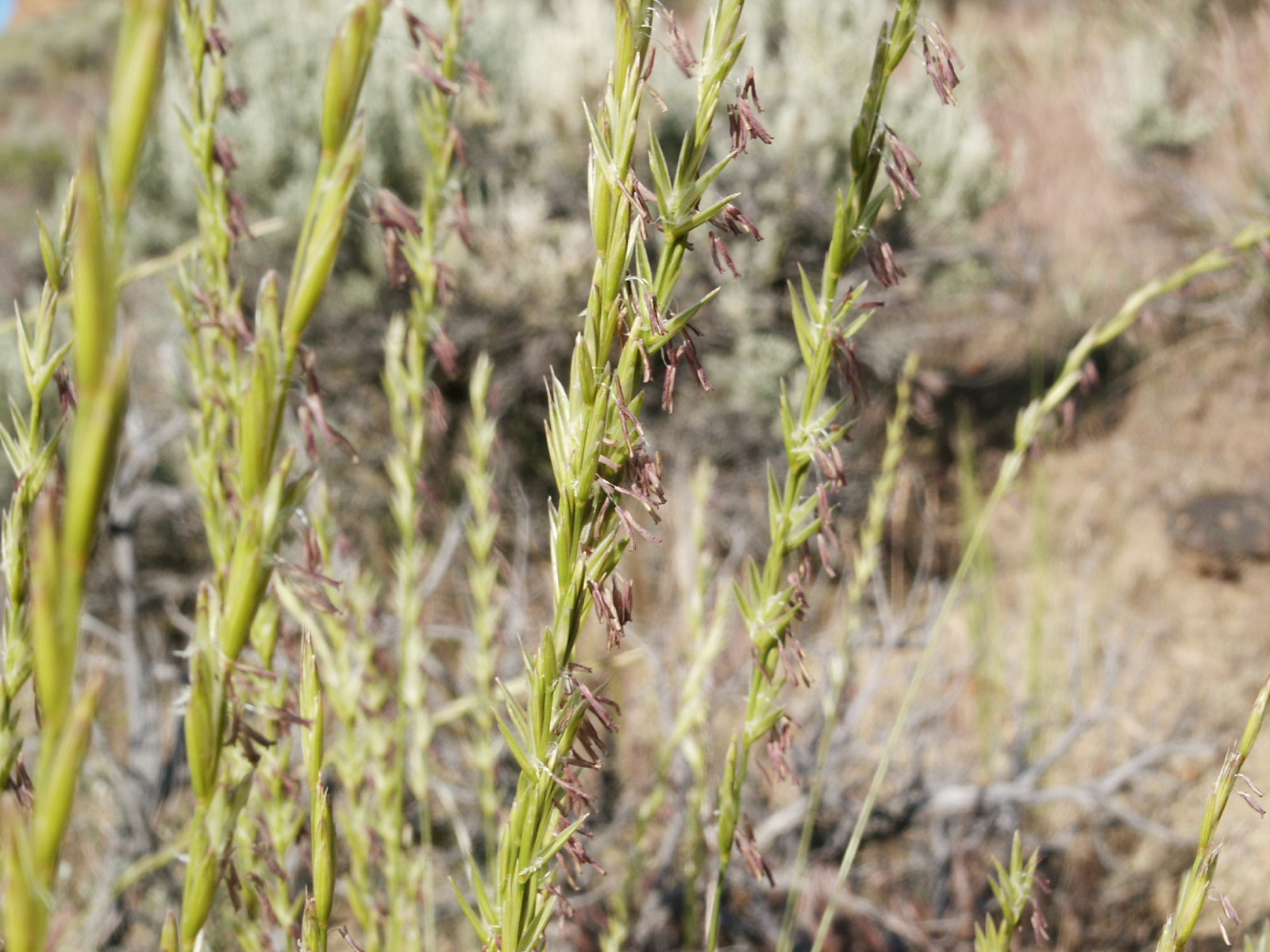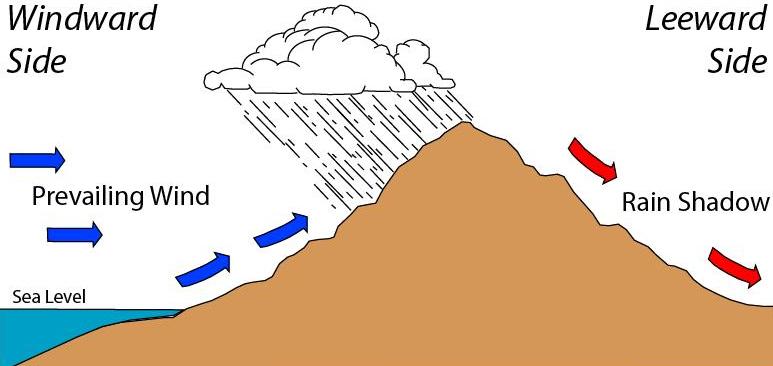|
Vaseux-Bighorn National Wildlife Area
Vaseux-Bighorn National Wildlife Area is a National Wildlife Area in British Columbia, Canada, primarily set aside to protect winter rangeland for California bighorn sheep. In 1979, the Vaseux-Bighorn Wildlife Area was established in response to substantial reduction in wild animal populations in the area. Identified factors contributing to species decline at the time were high predator population, overharvesting of species, and illegal hunting. Land development, cattle raising, and lumbering also might have altered species populations. Under these conditions, the area was able to be classified as a Category IV area by the IUCN and is now used for wildlife habitat and conservation. Even with minimal anthropogenic use of the area, threats persist through invasive species. Recreational use is limited spatially and is only open to the public during the day. History and natural resources The land that the Vaseux-Bighorn National Wildlife Area encompasses is a part of the traditi ... [...More Info...] [...Related Items...] OR: [Wikipedia] [Google] [Baidu] |
British Columbia
British Columbia (commonly abbreviated as BC) is the westernmost province of Canada, situated between the Pacific Ocean and the Rocky Mountains. It has a diverse geography, with rugged landscapes that include rocky coastlines, sandy beaches, forests, lakes, mountains, inland deserts and grassy plains, and borders the province of Alberta to the east and the Yukon and Northwest Territories to the north. With an estimated population of 5.3million as of 2022, it is Canada's third-most populous province. The capital of British Columbia is Victoria and its largest city is Vancouver. Vancouver is the third-largest metropolitan area in Canada; the 2021 census recorded 2.6million people in Metro Vancouver. The first known human inhabitants of the area settled in British Columbia at least 10,000 years ago. Such groups include the Coast Salish, Tsilhqotʼin, and Haida peoples, among many others. One of the earliest British settlements in the area was Fort Victoria, established ... [...More Info...] [...Related Items...] OR: [Wikipedia] [Google] [Baidu] |
Bluebunch Wheatgrass
''Pseudoroegneria spicata'' is a species of grass known by the common name bluebunch wheatgrass. This native western North American perennial bunchgrass is also known by the scientific synonyms ''Elymus spicatus'' and ''Agropyron spicatum''. The grass can be found in the United States, Canada, and Mexico from Alaska and Yukon south as far as Sonora and Nuevo León. Description Bluebunch wheatgrass can grow up to three feet tall. It can often be distinguished from other bunchgrasses by the awns on its seedheads which stand out at an angle nearly 90 degrees from the stem. It is often bluish. The roots of the grass have a waxy layer that helps it resist desiccation in dry soils. In areas with more moisture the grass may produce rhizomes. The relationship between the traits and climates of ''P. spicata'' is consistent with those of other grass species that also have a summer growing season. Populations of ''P. spicata'' from warm, arid environments are often smaller with earlier phe ... [...More Info...] [...Related Items...] OR: [Wikipedia] [Google] [Baidu] |
Species At Risk Act
The ''Species at Risk Act'' (SARA) (the ''Act'') is a piece of Canadian federal legislation which became law in Canada on December 12, 2002. It is designed to meet one of Canada's key commitments under the International Convention on Biological Diversity. The goal of the ''Act'' is to prevent wildlife species in Canada from disappearing by protecting endangered or threatened organisms and their habitats. It also manages species which are not yet threatened, but whose existence or habitat is in jeopardy. SARA defines a method to determine the steps that need to be taken in order to help protect existing relatively healthy environments, as well as recover threatened habitats, although timing and implementation of recovery plans have limitations. It identifies ways in which governments, organizations, and individuals can work together to preserve species at risk and establishes penalties for failure to obey the law. The ''Act'' designates COSEWIC, an independent committee of wildli ... [...More Info...] [...Related Items...] OR: [Wikipedia] [Google] [Baidu] |
Picoides Albolarvatus FWS
''Picoides'' is a genus of woodpeckers ( family Picidae) that are native to Eurasia and North America, commonly known as three-toed woodpeckers. Taxonomy The genus ''Picoides'' was introduced by the French naturalist Bernard Germain de Lacépède in 1799. The type species was subsequently designated as the Eurasian three-toed woodpecker (''Picoides tridactylus'') by the English zoologist George Robert Gray in 1840. The genus name combines the Latin ''Picus'' for a woodpecker and the Greek ''-oidēs'' meaning "resembling". The genus ''Picoides'' formerly contained around 12 species. In 2015 a molecular phylogenetic analysis of nuclear and mitochondrial DNA sequences from pied woodpeckers found that three existing genera (''Picoides'', '' Veniliornis'' and '' Dendropicos'') were polyphyletic. After the resurrection of five monophyletic genera and the subsequent rearrangement in which most of the former members of ''Picoides'' were moved to '' Leuconotopicus'' and ''Dryobat ... [...More Info...] [...Related Items...] OR: [Wikipedia] [Google] [Baidu] |
Satyrium Behrii
''Satyrium behrii'', the Behr's hairstreak, is a butterfly of the family Lycaenidae. It is found in western North America from western Texas north and west through New Mexico, Arizona, and southern California to British Columbia. The wingspan is 24–32 mm. Adults are on wing from June to July in one generation per year. Its habitats include dry slopes and canyons. Adults feed on flower nectar. The larvae feed on ''Purshia tridentata'', Butterflies of Canada'''' and '' Cercocarpus montanus
[...More Info...] [...Related Items...] OR: [Wikipedia] [Google] [Baidu] |
Lewis's Woodpecker
Lewis's woodpecker (''Melanerpes lewis'') is a large North American species of woodpecker which ornithologist Alexander Wilson named after Meriwether Lewis, one of the explorers who surveyed the areas bought by the United States of America as part of the Louisiana Purchase and discovered this species of bird. Taxonomy Lewis's woodpecker was described and illustrated in 1811 by the American ornithologist Alexander Wilson in his ''American Ornithology; or, the Natural History of the Birds of the United States''. Wilson based his description on some bird skins that had been collected on an expedition across the western portion of the United States led by Meriwether Lewis and William Clark in 1803–1806. Wilson coined the English name "Lewis's woodpecker" and the binomial name ''Picus torquatus''. Unfortunately, the specific epithet was preoccupied by the ringed woodpecker, ''Celeus torquatus'' (Boddaert, 1783) and so in 1849 the English zoologist George Robert Gray coined a new ... [...More Info...] [...Related Items...] OR: [Wikipedia] [Google] [Baidu] |
Lewis's Woodpecker
Lewis's woodpecker (''Melanerpes lewis'') is a large North American species of woodpecker which ornithologist Alexander Wilson named after Meriwether Lewis, one of the explorers who surveyed the areas bought by the United States of America as part of the Louisiana Purchase and discovered this species of bird. Taxonomy Lewis's woodpecker was described and illustrated in 1811 by the American ornithologist Alexander Wilson in his ''American Ornithology; or, the Natural History of the Birds of the United States''. Wilson based his description on some bird skins that had been collected on an expedition across the western portion of the United States led by Meriwether Lewis and William Clark in 1803–1806. Wilson coined the English name "Lewis's woodpecker" and the binomial name ''Picus torquatus''. Unfortunately, the specific epithet was preoccupied by the ringed woodpecker, ''Celeus torquatus'' (Boddaert, 1783) and so in 1849 the English zoologist George Robert Gray coined a new ... [...More Info...] [...Related Items...] OR: [Wikipedia] [Google] [Baidu] |
Climate Change
In common usage, climate change describes global warming—the ongoing increase in global average temperature—and its effects on Earth's climate system. Climate change in a broader sense also includes previous long-term changes to Earth's climate. The current rise in global average temperature is more rapid than previous changes, and is primarily caused by humans burning fossil fuels. Fossil fuel use, deforestation, and some agricultural and industrial practices increase greenhouse gases, notably carbon dioxide and methane. Greenhouse gases absorb some of the heat that the Earth radiates after it warms from sunlight. Larger amounts of these gases trap more heat in Earth's lower atmosphere, causing global warming. Due to climate change, deserts are expanding, while heat waves and wildfires are becoming more common. Increased warming in the Arctic has contributed to melting permafrost, glacial retreat and sea ice loss. Higher temperatures are also causing m ... [...More Info...] [...Related Items...] OR: [Wikipedia] [Google] [Baidu] |
Rain Shadow
A rain shadow is an area of significantly reduced rainfall behind a mountainous region, on the side facing away from prevailing winds, known as its leeward side. Evaporated moisture from water bodies (such as oceans and large lakes) is carried by the prevailing onshore breezes towards the drier and hotter inland areas. When encountering elevated landforms, the moist air is driven upslope towards the peak, where it expands, cools, and its moisture condenses and starts to precipitate. If the landforms are tall and wide enough, most of the humidity will be lost to precipitation over the windward side (also known as the ''rainward'' side) before ever making it past the top. As the air descends the leeward side of the landforms, it is compressed and heated, producing foehn winds that ''absorb'' moisture downslope and cast a broad "shadow" of dry climate region behind the mountain crests. This climate typically takes the form of shrub–steppe, xeric shrublands or even deserts ... [...More Info...] [...Related Items...] OR: [Wikipedia] [Google] [Baidu] |
Purcell Mountains
The Purcell Mountains are a mountain range in southeastern British Columbia, Canada. They are a subrange of the Columbia Mountains, which includes the Selkirk, Monashee, and Cariboo Mountains. They are located on the west side of the Rocky Mountain Trench in the area of the Columbia Valley, and on the east side of the valley of Kootenay Lake and the Duncan River. The only large settlements in the mountains are the Panorama Ski Resort and Kicking Horse Resort, adjacent to the Columbia Valley towns of Invermere and Golden, though there are small settlements, such as Yahk and Moyie along the Crowsnest Highway, and residential rural areas dependent on the cities of Creston, Kimberley and Cranbrook, which are located adjacent to the range. The Purcells are shown on some United States maps as the Percell Mountains, where their southern limit protrudes into the states of Idaho and Montana, abutting Lake Koocanusa, a reservoir on the Kootenai River. American geographic classification ... [...More Info...] [...Related Items...] OR: [Wikipedia] [Google] [Baidu] |



.jpg)
